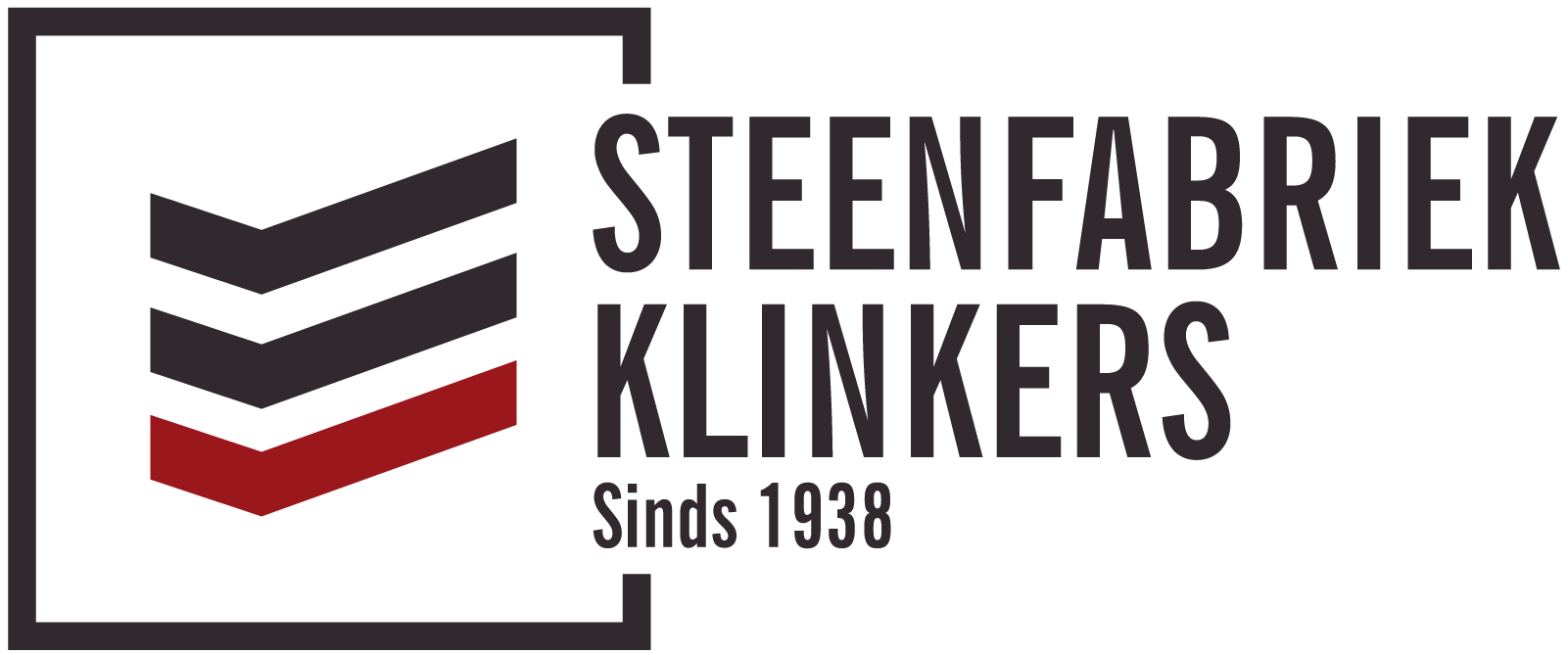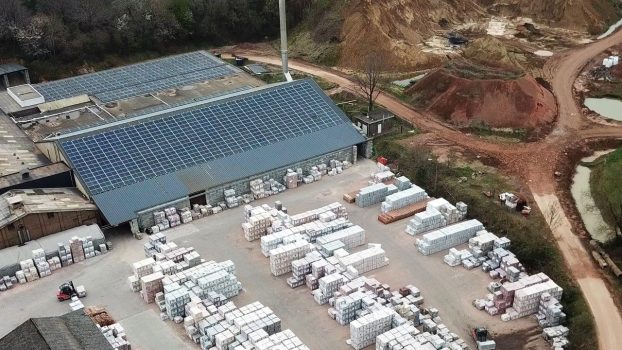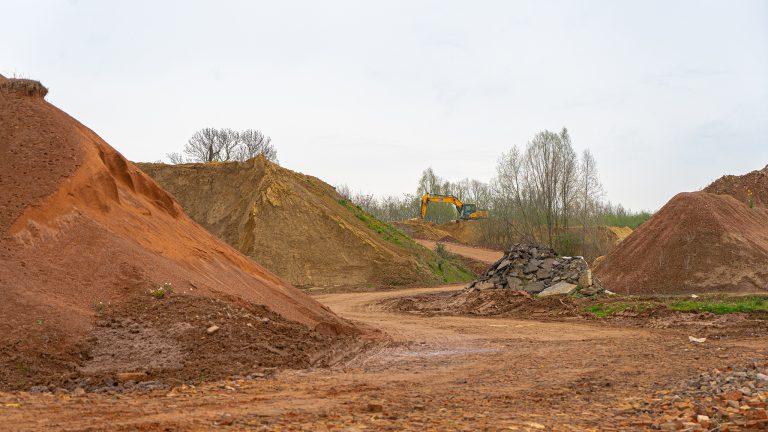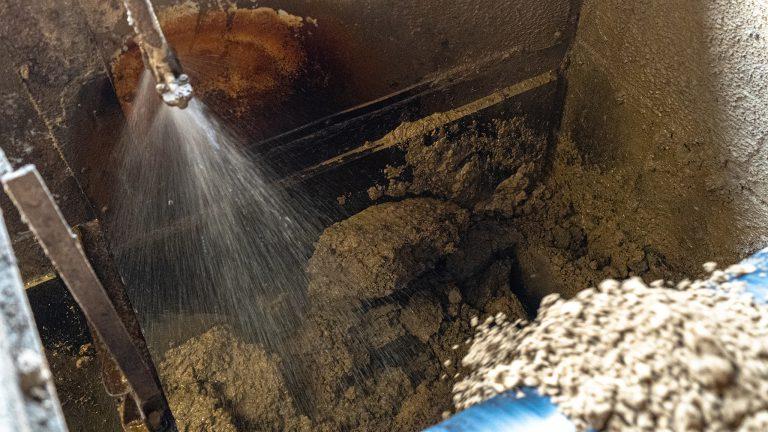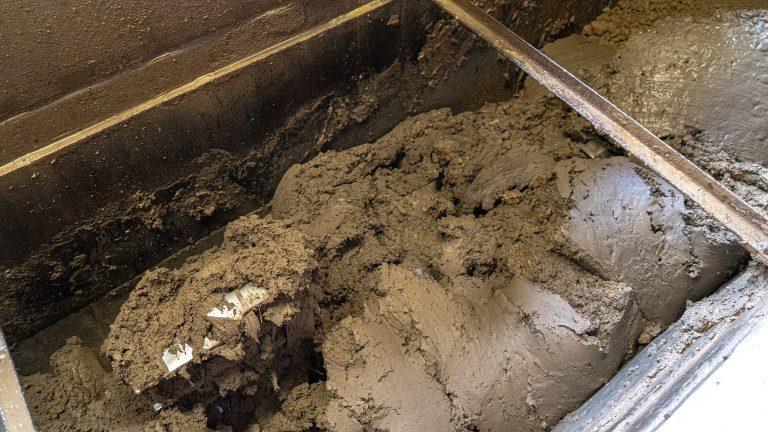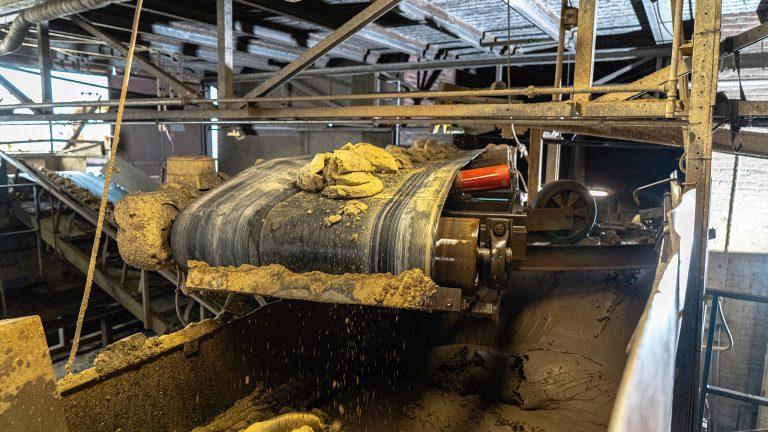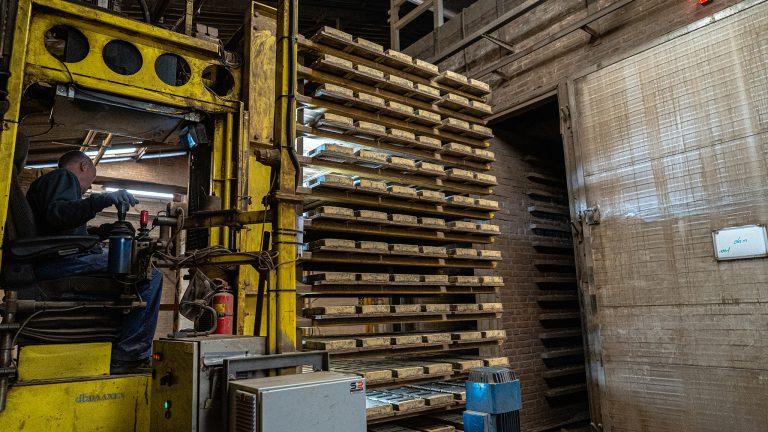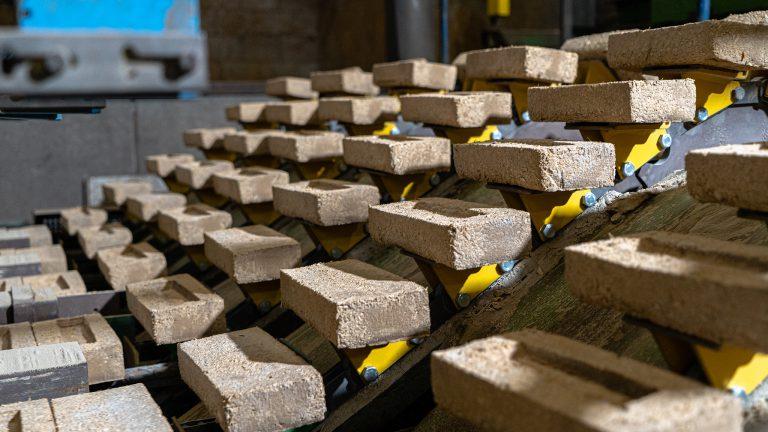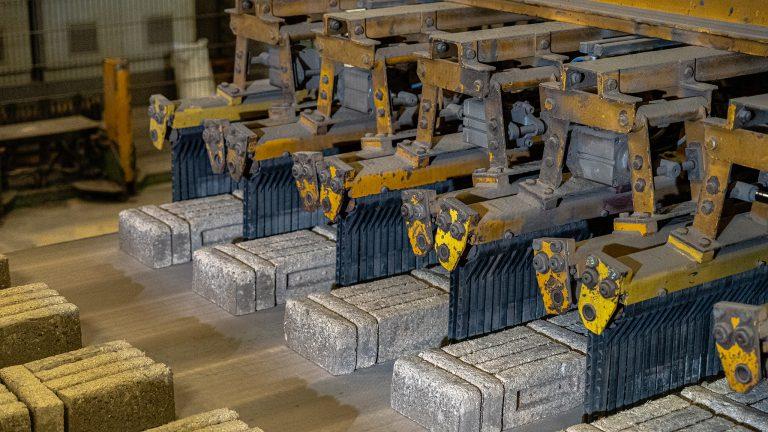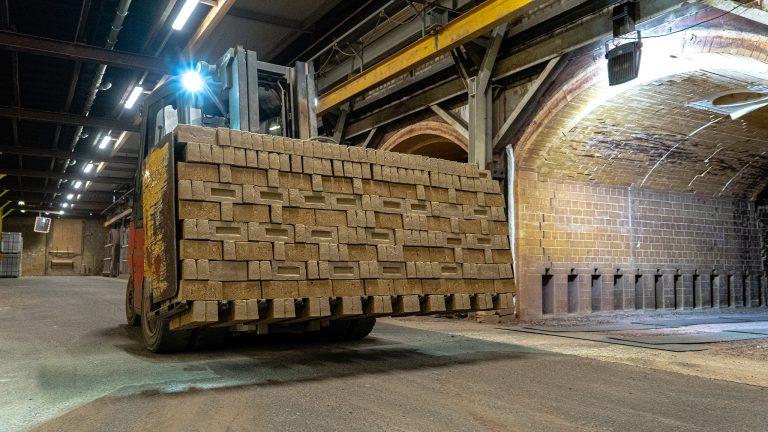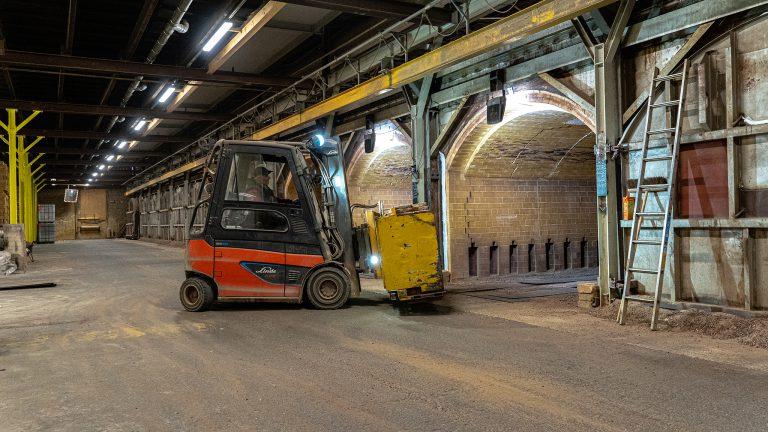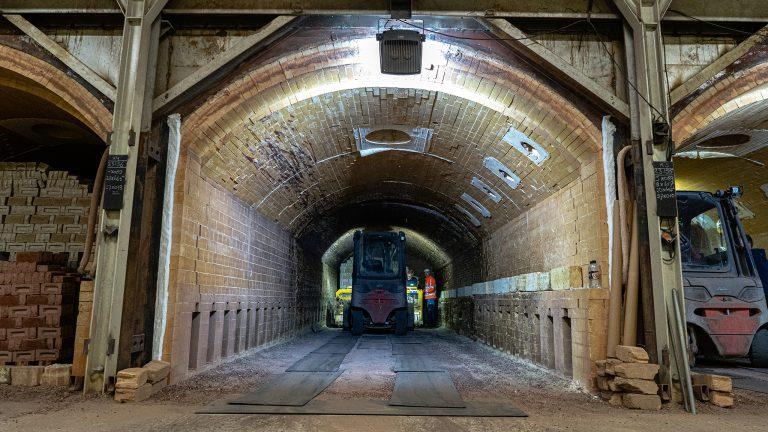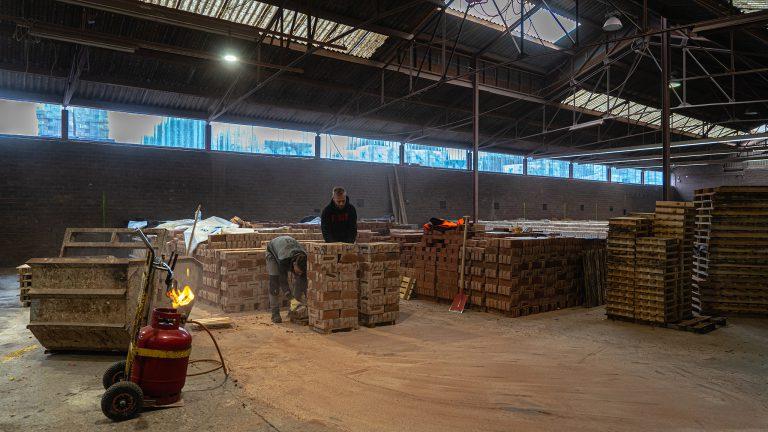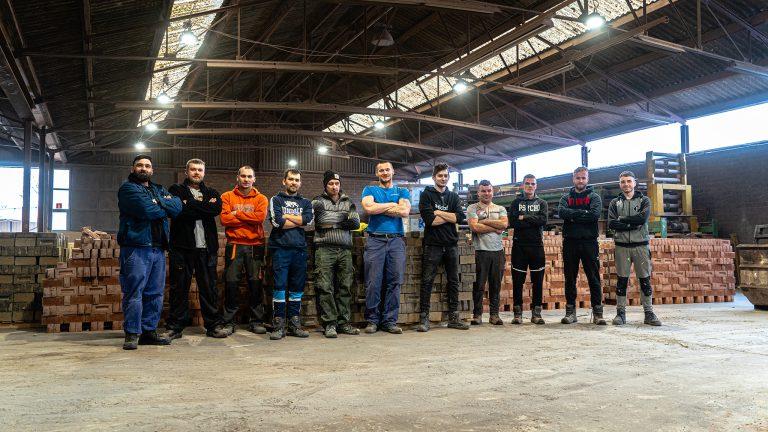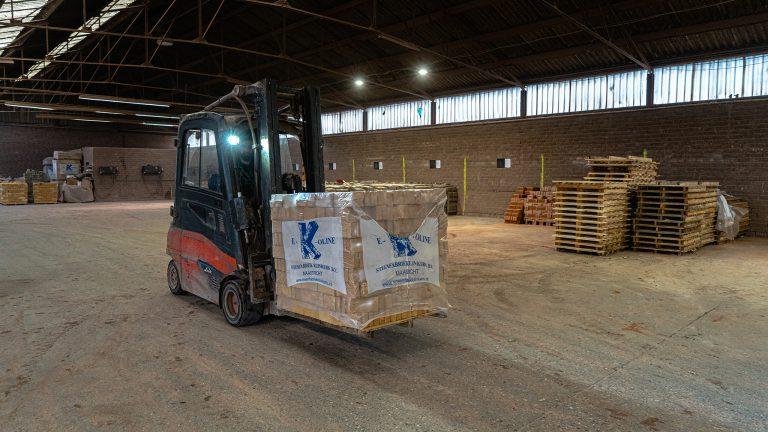Production Process
Our bricks go a long way before they are bricked into a wall. Here you can read more about our production process and find out how our bricks get their unique character.
Klinkers handles raw materials and energy smartly
- Clay remnants are reused;
- Our drying room is heated with waste heat from our oven;
- The roof of our shed is full of solar panels that provide a significant portion of the energy for our plant;
- We use recycled pallets whenever possible;
- We use electric forklifts to move our stones.
Step 1: The clay
Steenfabriek Klinkers makes all its bricks from yellow or red loess clay. That clay is mined in the region in clay mining areas or in excavations for construction projects. Our suppliers dig up the clay and bring their clay boulders to our Brickworks.
Step 2: Mauken
Clay coming directly from the ground is not useful for making high-quality bricks. Therefore, we leave the clay, for about 6 months, quietly. The plant residues in the clay die and we are left with a raw material suitable for production.
Step 3: Mixing
The clay is transported from the storage site to our factory. Then the clay goes through a conveyor belt to our mixing plant. There the clay is mixed with water. This is also where we add any additives that change the color of the stone.
The clay from the mixer passes through a sieve and is mixed with remnants of already mixed clay. This way we waste as few resources as possible.
Step 3: Getting into the mold
Out of the mixing plant come strands of clay. These are cut off and go to the hand-forming plant. In that installation, the pieces of clay roll down in stages. There is sand on each step, which gets on the stone. Thus, the clay acquires planes and the shape already begins to resemble that of a brick. Then the clay falls into the mold. The force of the fall causes the mold to fill to the corners. The clay above the mold is cut off and reused.
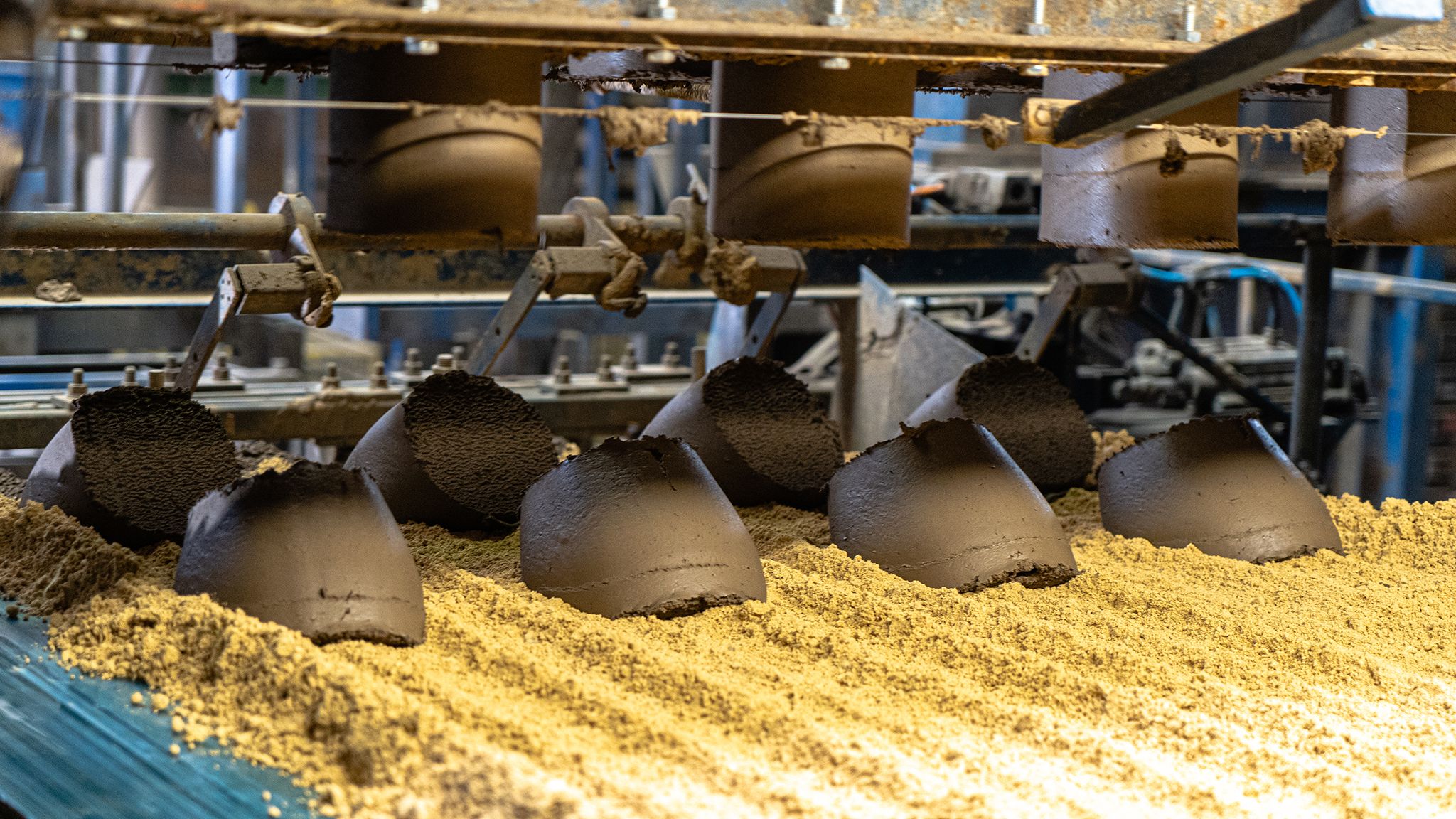
Step 4: Drying and stacking
Before the bricks are fired, they lie in the drying chamber for 1 to 2 days. That chamber has a temperature of around 100 degrees and is heated mainly with residual heat from our furnace. The dry stones are stacked by a machine in the kiln. The machine places them in a special pattern so they stay upright during baking.
Step 5: Baking
We use a traditional flame oven to bake our bricks. Our method of firing makes our bricks truly unique. We own 1 of 2 working flame ovens in the Netherlands.
The temperature in the oven is raised (to 1060℃) for 2 weeks and then lowered again. We bake our bricks longer than is common in other oven types, giving you more colorfast bricks. In addition, a flame furnace naturally has a temperature difference. This gives our stones slight color variations.
Step 6: Sorting
When the bricks are sufficiently cooled, they may leave the kiln and go to the sorting hall. There, the stones are hand checked, selected and put on pallets. The stones are sorted by color, hardness and size. Then they are ready to be transported to the construction site or storage area.
Want to know more about our production process?
Call Klinkers via +31 (0) 433 478 333
